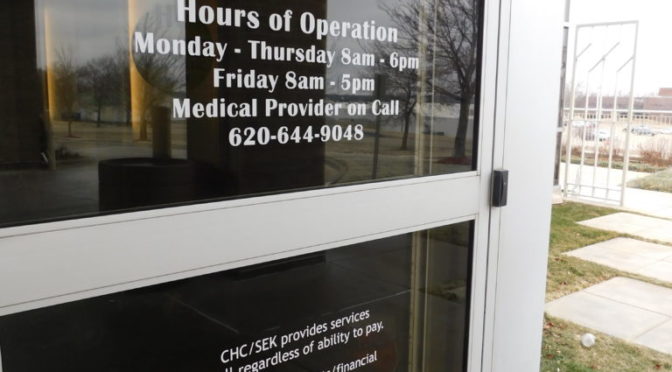
The COVID-19 pandemic might be testing many aspects of the state’s public health system, but it’s also spurring innovation.
Social distancing measures to contain the COVID-19 pandemic outbreak resulted in many people postponing or canceling non-emergency-related medical appointments. Early during the pandemic, the state created regulatory flexibility so Kansans could continue receiving necessary care in new ways, and a new era of alternate visits from curbside to telehealth became our new normal.
In 2020 CHC/SEK saw 18,480 alternative visits across the entire health system, including a record 2,194 visits in December. The top three alternate methods patients were seen was by telephone, curbside and E-visits using video technology in smartphones, tablets and computers.
Early in the pandemic, in a matter of days, CHC/SEK pivoted from in-clinic patient visits to alternative visits, where CHC/SEK medical providers began providing services via phone or online video chats, and curbside to fill the gap until office visits were safely possible again. Alternate visits allow a patient to schedule visits at their convenience, as they can have an E-visit from home, work or school without the need to travel. All “virtual” patients need is a strong internet signal and a smartphone, tablet or computer to connect with their medical professional. This option allows patients and providers to feel safe.
“What we saw, especially at the beginning of the pandemic, our patients were apprehensive to come to the clinic to see their provider and as you know, chronic illness is not going to wait until COVID-19 is in the rearview mirror,” Holley Forrest, CHC/SEK director of operations said, “for us it was about making sure we stay in contact with our patients whether that was over the phone, via tele-visit or at the curb.”
For some patients, CHC/SEK staff are the only people they come in to contact with daily, weekly or on a monthly basis. Thanks to technology, some patients who are being seen for primary care can also be given resources for non-primary care such as behavioral health. Forrest said visits such as well child checkups cannot wait as most children are at home all week now and do not have teachers or nurses to make sure they are well. Forrest said she believes alternative visits will “absolutely” continue and is excited to see what the future holds for alternative visits.
“I think it’s a great resource for our patients, patients with transportation issues, mobility issues,” she said, “this is a great way for us to stay connected and continue to see them and check in on them.”
Monitoring devices can come in handy when doing an alternative visit, Forrest said. The State of Kansas agrees. The State Finance Council recently approved allocating $3 million federal coronavirus relief funding so Community Care health centers could provide monitoring devices to their patients. This telehealth project will support at least 10,000 low-income and otherwise underserved Kansans by securely connecting portable devices to records at the health centers. CHC/SEK was awarded more than $700,000 for the purchase of blood pressure monitors, glucose monitors, finger-tip pulse oximeters, thermometers and electronic scales will facilitate increased patient-provider management of COVID-19 and/or chronic conditions.
“Implementing telehealth on this scale would have been unimaginable at the beginning of 2020,” said Community Care CEO Denise Cyzman. “The pandemic has prompted futuristic concepts to become present-day public health realities.”
The $3 million was part of a $38.5 million package recommended by the Strengthening People and Revitalizing Kansas (SPARK) task force, which also directed funding to hospitals, local health departments and nursing homes. Another $1 million was designated to be used by state-funded community-based clinics to help offset COVID-related lost revenue and increased expenses. Also, understanding the value of maintaining healthcare through telemedicine, the Centers for Medicare and Medicaid Services (CMS) relaxed telehealth regulations and agreed to pay for virtual visits and visits that take place by telephone.
